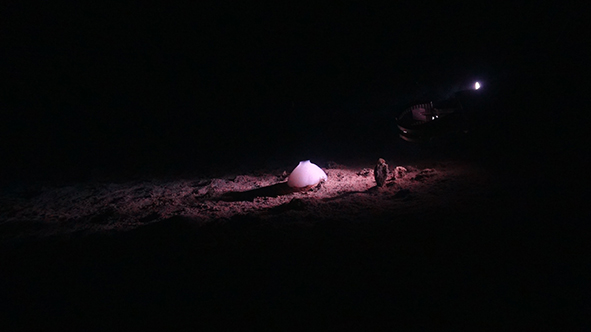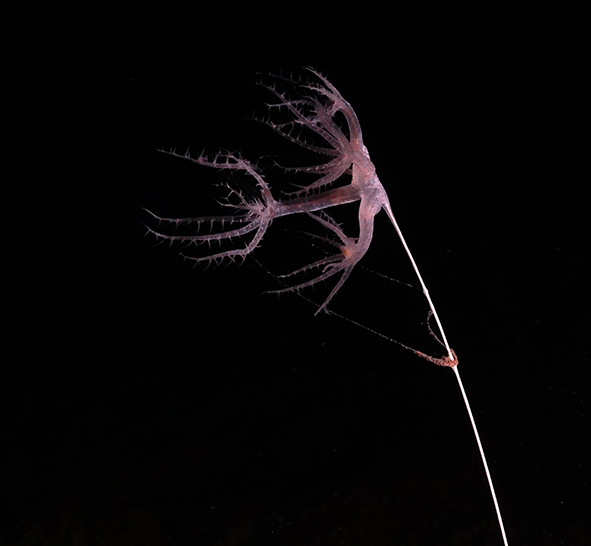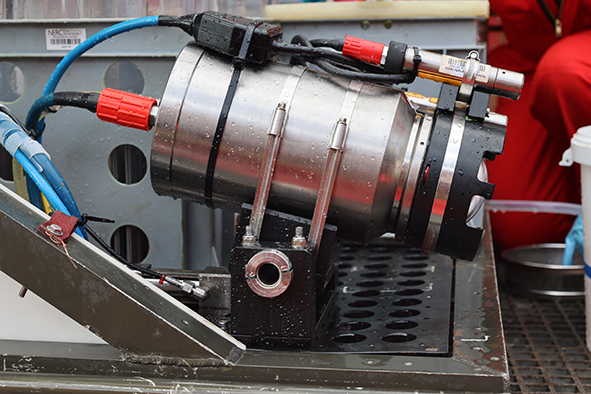In an age of constant photography, with devices in our pockets capable of advanced imaging, it may seem natural that we can get excellent images in the deep ocean. Unfortunately, things are more complicated than they may seem. Despite underwater cameras being used since 1893, it took until 1939 for images of the deep sea floor to be taken. Maurice Ewing and Allyn Vine, of Woods Hole Oceanographic Institution, first succeeded in this by encasing a camera and flash system in a thick metal housing with a glass window. The camera took a single image per deployment and was triggered by a weight when it hit the seabed. Seeing pictures of the deep sea floor was transformative at this time, being used in many applications from investigating geological deposits, to shipwrecks to making new biological discoveries (not all of which were correct – such as the idea of a lophenteropneust). We have technologies now to collect hundreds of thousands of images of the seafloor, but as for shallow water underwater photography, getting remarkable images is still a challenge. In this blog I’m going to show how we overcome some of the key challenges and sometimes follow the same approaches as in shallow water to get some of the amazing pictures we have obtained over 4000 m below the surface of the Pacific Ocean.

Firstly, the abyssal ocean is devoid of light, completely dark except for the small glows of bioluminescence generated by some of the animals. Taking photographs of the deep sea requires external light sources, we usually use a strong flash of light. For all our photography with the autonomous submarine Autosub we need a lot of light to be delivered quickly. The submarine is moving at 1.2 meters per second, a walking pace, so we need a fast shutter speed (we’re using about 1/250th second) to freeze the movement and capture a focussed image of the seafloor. With the remotely operated vehicle, however, we can set the vehicle on the seafloor, like a tripod, and use lower light and longer exposures. We’ve been enjoying experimenting with using directed light to highlight the darkness of the environment. We’ve also been able to get the light behind the subject to make translucent animals stand out against the sediment background. Fortunately, the water is very clear in the Clarion Clipperton Zone, some of the clearest in the world, so we haven’t had to contend with large amounts of backscattered light from particles in the water. Despite this, we sometimes stir up small amounts of sediment so have separated the lights from the camera to try and minimise the effects of particles.

A fundamental rule of underwater photography is to minimise the distance between the camera and the subject. Even though the water is very clear here, given the absorption of light in water, we still lose colour in a short distance. With a large ROV, around the size of a car, it is typical for the cameras to be mounted on the middle of the vehicle. This puts them at least a meter from the animals on the seafloor we are trying to image, usually more. This gets usable but not necessarily spectacular photographs. We needed to reduce this distance. To do this, the ROV team helped us mount the camera on the tool sled, with a purpose built hydraulic tilt unit. This is letting us get a few centimeters away from the animals we are imaging and make fine adjustments to get them in frame. This has been a revelation and is also having the extra bonus of helping us spot smaller animals with the unique perspective.

Our camera systems are operating in air, so they need to be housed in a way that is capable of withstanding the water and extremely high pressures at over 4000 meters deep. The camera housings are machined metal tubes with thick glass windows, very similar to those used in the early days of deep-sea photography. The camera image on the ROV is transmitted back to the ship via the ROV umbilical in high definition at real time, so we can see exactly what is happening and trigger the shutter from the surface when we get everything right.
You may be wondering why we go to the effort and time of imaging seafloor animals. Our scientific objective is to get clear images of each individual animal to help characterise the biodiversity of the Clarion Clipperton Zone. We collect examples of the animals and use traditional taxonomic and DNA-based methods to identify them down to species and even describe the species if they are new. Once we have this, we can then link the species-level identifications with images, enabling us to improve our identifications in wide area photography. This then allows us to collect biodiversity information over many kilometers of the seafloor. The information derived from photographs lead to much more robust measurements of which animals are present and where they live over wide areas. Gathering this fundamental ecological knowledge is an important objective of the SMARTEX project.